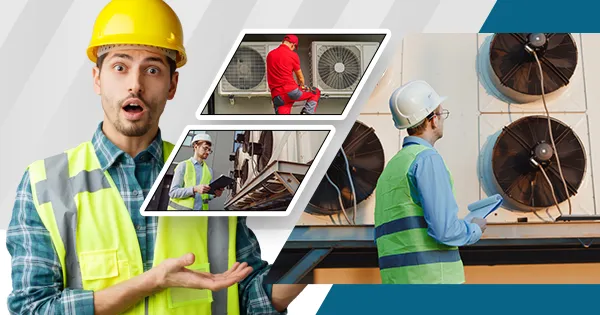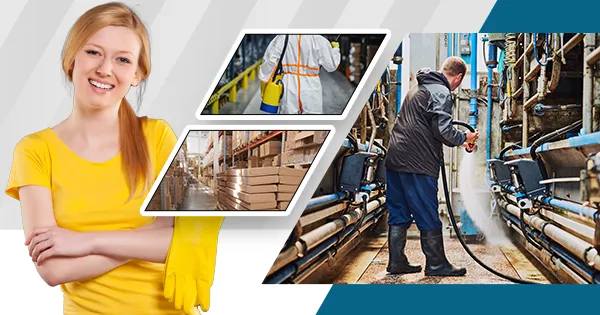Maintenance of the facade of a building is crucial for several reasons. First and foremost, it helps to preserve the structural integrity of the building. The facade acts as a protective barrier against external elements such as rain, wind, and sunlight. Without proper maintenance, these elements can cause damage to the building’s structure, leading to costly repairs or even collapse. In addition to structural integrity, maintaining the building facade also enhances its aesthetic appeal. A well-maintained facade creates a positive impression on visitors and potential tenants or buyers. It adds value to the property and can attract more business opportunities.
Understanding the Different Types of Building Facades
There are several types of building facades, each with its characteristics and maintenance requirements. Some common types include glass facades, stone facades, metal facades, and composite facades. Glass facades are popular in modern architecture due to their sleek and transparent appearance. They require regular cleaning to maintain their clarity and prevent the buildup of dirt and grime. Stone facades, on the other hand, are known for their durability and timeless beauty. However, they may require periodic sealing to protect against water damage and staining.
Metal facades, such as aluminium or stainless steel, are lightweight and easy to maintain. They may require occasional cleaning to remove dirt and oxidation. Composite facades combine different materials, such as metal panels with glass or stone accents. The maintenance requirements for composite facades depend on the materials used.
Common Problems with Building Facades and How to Fix Them
Building facades can face various issues over time, including cracks, water damage, fading paint, and corrosion. These problems can compromise the structural integrity of the building and affect its appearance. Cracks in the facade can occur due to the settling of the building or external forces such as earthquakes. They should be addressed promptly to prevent further damage. Depending on the severity of the crack, it may be repaired using sealants or by replacing the affected area.
Water damage is another common issue, especially in areas with heavy rainfall or high humidity. It can lead to mould growth, rotting of wood, and deterioration of other materials. Regular inspections and maintenance can help identify and fix water damage early on.
Fading paint is a cosmetic issue that can make a building look dull and aged. Repainting the facade can restore its appearance and protect it from further damage. Corrosion is a concern for metal facades, as it can weaken the structure and lead to rust stains. Regular cleaning and applying protective coatings can prevent corrosion.
Best Practices for Cleaning and Maintaining Building Facades
Proper cleaning and maintenance are essential for preserving the appearance and longevity of building facades. Here are some best practices to follow:
✔️ Regular Inspections
Conduct routine inspections to identify any signs of damage or deterioration. This will allow for timely repairs and prevent further issues.
✔️ Cleaning
Clean the facade regularly to remove dirt, dust, and pollutants. The frequency of cleaning depends on the location and environmental conditions.
✔️ Use Appropriate Cleaning Methods
Different facade materials require different cleaning methods. For example, glass facades can be cleaned using water and mild detergent, while stone facades may require specialised cleaners.
✔️ Avoid Harsh Chemicals
Harsh chemicals can damage facade materials and harm the environment. Use eco-friendly cleaning products whenever possible.
✔️ Repair Cracks and Damage Promptly
Address any cracks or damage as soon as they are identified to prevent further deterioration.
✔️ Apply Protective Coatings
Protective coatings can help prevent water damage, fading, and corrosion. Consult with a professional to determine the appropriate coating for your facade material.
Choosing the Right Materials for Your Building Facade
When selecting materials for your building facade, there are several factors to consider, including durability, aesthetics, maintenance requirements, and cost. Here are some popular materials and their pros and cons:
✔️ Glass
Glass facades offer a modern and transparent look. They are durable and require minimal maintenance. However, they can be expensive and may require regular cleaning to maintain their clarity.
✔️ Stone
Stone facades are known for their timeless beauty and durability. They can withstand harsh weather conditions and require minimal maintenance. However, they can be costly and may require periodic sealing to protect against water damage.
✔️ Metal
Metal facades, such as aluminium or stainless steel, are lightweight and easy to maintain. They can be customised to achieve various designs and finishes. However, they may require occasional cleaning to remove dirt and oxidation.
✔️ Composite
Composite facades combine different materials to achieve a desired aesthetic. They offer flexibility in design and can be cost-effective. However, the maintenance requirements depend on the materials used.
How to Enhance the Aesthetics of Your Building Facade?
Enhancing the aesthetics of a building’s facade can have a significant impact on its overall appearance and value. Here are some tips for enhancing the aesthetics:
✔️ Lighting
Install appropriate lighting fixtures to highlight architectural features and create a welcoming ambience.
✔️ Landscaping
Incorporate landscaping elements such as plants, trees, or green walls to add a touch of nature and soften the facade.
✔️ Artwork or Murals
Consider adding artwork or murals to create a unique and eye-catching facade.
✔️ Colour Scheme
Choose a colour scheme that complements the surrounding environment and reflects the desired image of the building.
✔️ Architectural Details
Incorporate architectural details such as decorative mouldings or unique textures to add visual interest.
Tips for Protecting Your Building Facade from Weather Damage
Weather-related damage can pose a significant threat to building facades. Here are some tips for protecting them:
✔️ Waterproofing
Apply a waterproofing membrane or coating to protect against water infiltration and damage.
✔️ Regular Inspections
Conduct regular inspections to identify any signs of water damage, cracks, or other issues caused by weather conditions.
✔️ Proper Drainage
Ensure that the building has proper drainage systems in place to prevent water accumulation and potential damage.
✔️ Wind Load Analysis
Consider conducting a wind load analysis to determine the structural integrity of the facade and make necessary reinforcements if needed.
✔️ Storm Shutters and Protective Screens
Install storm shutters and protective screens to shield the facade from high winds, flying debris, and extreme weather conditions.
Green Facade Maintenance: Sustainable Solutions for an Eco-Friendlier Building
In today’s environmentally conscious world, green facade maintenance is becoming increasingly popular. Green facades involve the use of plants and vegetation to cover the building’s exterior. They offer several benefits, including improved air quality, energy efficiency, and aesthetic appeal.
To maintain a green facade, regular watering, pruning, and fertilising may be required. It is important to choose plants that are suitable for the local climate and can withstand the conditions of the facade. Additionally, proper irrigation systems and drainage should be in place to prevent water damage to the building.
Outsourcing vs. In-House Maintenance: Which is Right for Your Building?
When it comes to building facade maintenance, there are two options: outsourcing the maintenance tasks to a professional company or handling them in-house. Each option has its pros and cons.
Outsourcing building facade maintenance allows building owners to benefit from the expertise and experience of professionals. They have access to specialised equipment and techniques that may not be available in-house. Outsourcing also frees up time and resources for building owners to focus on their core business activities.
On the other hand, in-house maintenance gives building owners more control over the maintenance process. They can tailor the maintenance schedule and tasks to their specific needs. In-house maintenance may also be more cost-effective for smaller buildings or those with simpler facade systems.
Conclusion: The Benefits of Proper Building Facade Maintenance
In conclusion, proper building facade maintenance is crucial for preserving the structural integrity, aesthetics, and value of a building. Regular inspections, cleaning, and repairs can prevent costly damage and ensure the longevity of the facade. Choosing the right materials and implementing sustainable solutions can further enhance the building’s appeal and environmental impact.
Whether outsourcing or handling maintenance in-house, building owners should prioritise regular maintenance to reap the benefits of a well-maintained facade. From protecting against weather damage to enhancing aesthetics, proper maintenance is an investment that pays off in the long run







